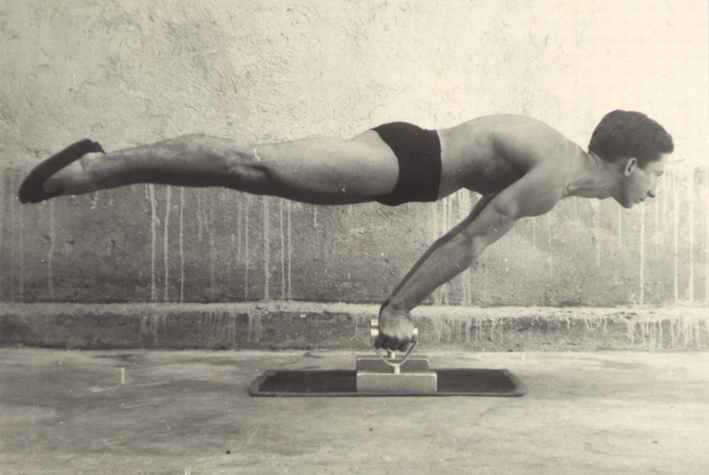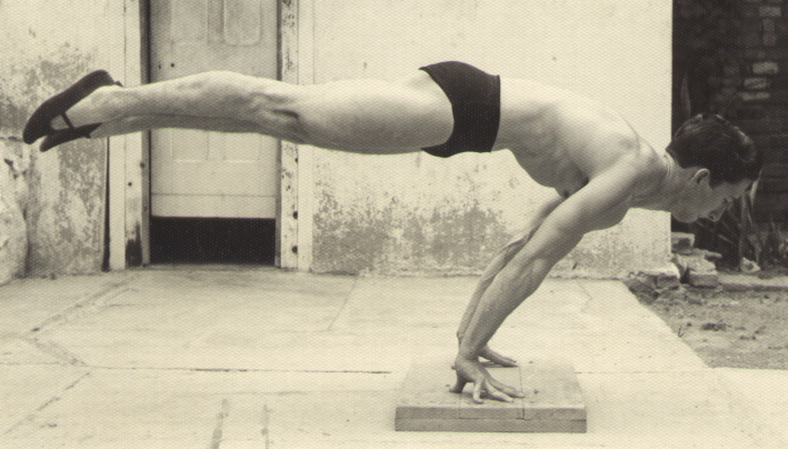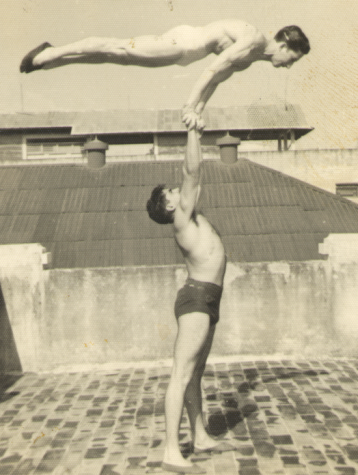Thanks for all the suggestions after my last message. Going to answer a number of them today.
“I am just started handstands and I notice that my arms are bent it seems I have a bad habit, ideas?”
You know this is something I battled with for a long time. When doing a handstand you want to have your arms locked out the entire time.
Should you overbalance you can bend your arms to save yourself but this should only be used as a last resort. And when you’re starting out you are better off not doing it so that you learn to use your hands to balance.
So how do you break this habit? Returning to the wall and doing handstands there with locked out arms would certainly help.
Also, any time you kick-up into a handstand have your arms straight from the very start. Extend them fully and imagine they have a splint wrapped around them that forces you to keep them that way.
“Actually I am interested in high wire walking or rope walking. And in the future also slacklining. I live in Finland and I would like to know where I could buy a slackline? Sorry my bad english. Thank You for your inspiring messages.”
Taina
Its funny that you should mention this, Taina as a friend just brought to my attention trying out slack lines.
Its something I’m looking into and may feature on the site in the future. As an informal poll how many out there are potentially interested in learning this art? And who out there currently does it?
“I would like to know some good ways to build up to walking up stairs on my hands.”
Before starting to walk up stairs you need to have a good base. You should be proficient in walking on flat ground, walking down stairs, and be strong.
Because you’re walking up the stairs on your hands you are having to push your bodyweight up with mostly a single arm at a time. I’d say being able to do three freestanding handstand pushups in a row is the bare minimum.
If you’re there its just a matter of starting small and working your way up. Literally. Find small stairs and master those before moving up to large steps. The more incremental you can make it the better.
“I started trying some headstands and handstands today after perusing this site + I really enjoyed it. I lift weights regularly and was wondering how frequently i should train hand balancing, do I do it as with weights(every other day) or can I practice every day?
Thanks very much.
Stuart
This is a fairly common question. Because hand balancing requires very fine skill it is best to practice it every single day. A little practice each day is much better than a two hour session once a week.
Of course starting out you’ll need to give some time for recovery, also depending on what moves you are practicing and how tough your other workouts are.
But once you have a foundation some practice every day is the best way to go. If for some reason you are unable to train everyday, not to worry cause you can still make progress with less practice.
Well that’s plenty to chew on for one day. So until next time…
Good Luck and Good Hand Balancing,
Logan Christopher
P.S. Many of these topics are covered in much more detail in Professor Paulinetti and Bob Jones’ hand balancing book.


 A number of people at the site have expressed an interest in building flexibility.
A number of people at the site have expressed an interest in building flexibility.









